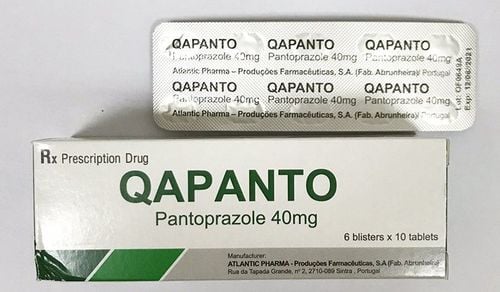This is an automatically translated article.
Post by Master, Doctor Mai Vien Phuong - Department of Examination & Internal Medicine - Vinmec Central Park International General Hospital
Although Helicobacter pylori infection is often associated with gastric manifestations, increasing evidence is drawing attention to its role in other pathologies. Recent studies have shown that H.pylori infection is associated with B12 deficiency and iron deficiency anemia.
1.H. pylori infection and B12 deficiency
A possible risk relationship between H. pylori infection and pernicious anemia has also been suggested. Prospective and case-control cohort studies have shown that H. pylori-positive patients have lower vitamin B12 (Cobalamin) levels when compared with controls. In addition, when treated with triple therapy - clarithromycin, amoxicillin, and omeprazole - to eradicate H. pylori, patients with prior pernicious anemia had satisfactory vitamin B12 levels, with moderate iron levels was 262.5 ± 100.0 pg/mL among H. pylori-infected individuals against 378.2 ± 160.6 pg/mL in the H. pylori-homogenous group, representing a 30.6% difference between those groups, with a P value of 0.001. Supporting this association, studies have shown that there is a decrease in Cobalamin levels in H. pylori-positive patients regardless of gastric atrophy and dyspepsia. Although studies regarding the elucidation of the pathophysiology of this risk association are still lacking, the Maastricht V/Florence Consensus Report recommends that in patients with this bacterial deficiency , should seek and eradicate H. pylori
2. H. pylori infection and iron deficiency anemia
Choe et al performed a randomized case-control study to test whether H. pylori-positive anemic patients, when treated to eradicate the infection, had a better response to blood iron levels. compared with the control group or not. The result was positive for a risk association between infection and anemia. Since then, studies have attempted to understand the pathophysiology behind this manifestation, in addition to evaluating its occurrence in different age groups. In this scenario, subsequent studies confirmed this correlation, in addition to explaining that it occurred regardless of bleeding. That is, tissue damage and hemorrhagic processes are not required to initiate anemia from H. pylori infection.
Anemia due to H. pylori infection is also thought to be a causative factor in growth disturbances in children and adolescents. Although this is a difficult relationship to prove, several studies agree on the effect of H. pylori-triggered anemia as a causal factor on the developmental gap in infants. In this sense, groups of children with unexplained anemia and growth disorders whose clinical presentation suggestive of this bacterial infection should be screened and, if necessary, instituted for H. pylori eradication, as recommended. of the current instruction
Please dial HOTLINE for more information or register for an appointment HERE. Download MyVinmec app to make appointments faster and to manage your bookings easily.
References Santos MLC, de Brito BB, da Silva FAF, Sampaio MM, Marques HS, Oliveira e Silva N, de Magalhães Queiroz DM, de Melo FF. Helicobacter pylori infection: Beyond gastric manifestations. World J Gastroenterol 2020; 26(28): 4076-4093 [PMID: 32821071 DOI: 10.3748/wjg.v26.i28.4076]














